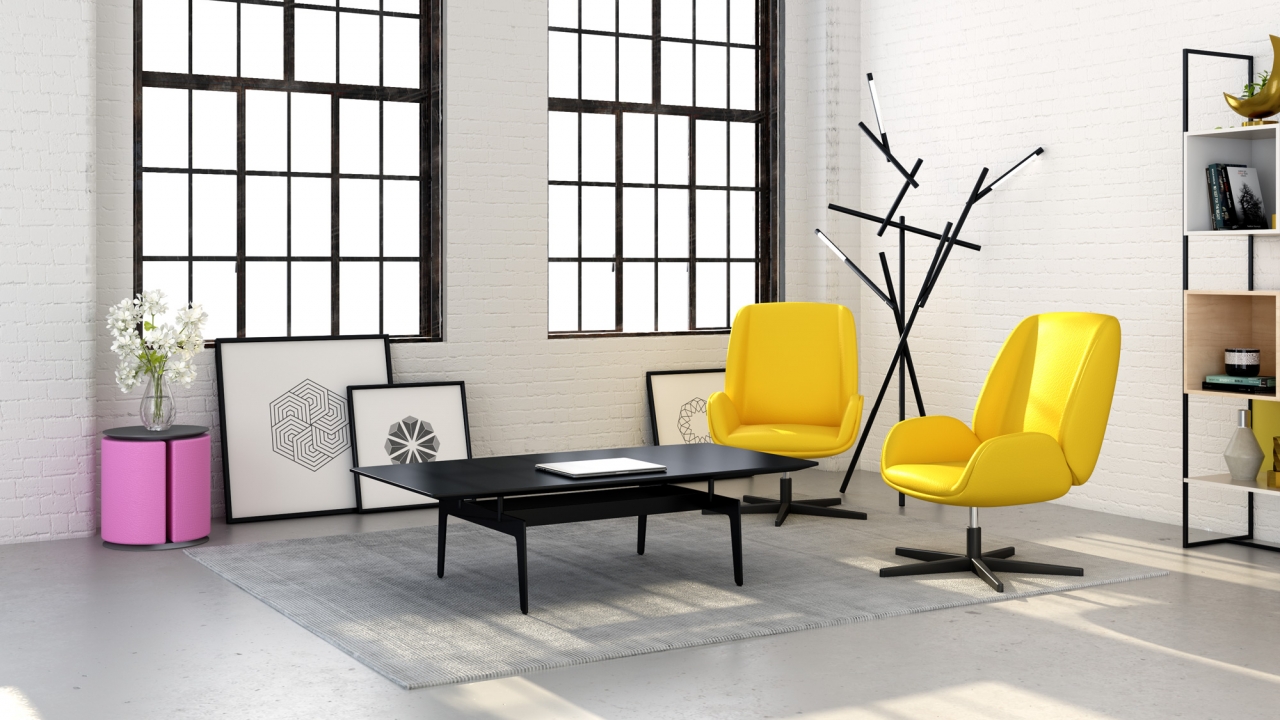
How Your Workplace’s Design Affects Your Health
Many recent studies demonstrate that modern human (built) environments are low-level stressors to our psyches. In particular, being away from sunlight, surrounded by greys, whites, and blacks, and being in closed-off spaces have been shown to contribute to frequent low-level, constant stress—a feeling almost synonymous with modern life. But constant exposure to low-level stressors weakens our immune systems. Stress is directly linked to most—if not all—of the major diseases humans face. Because of this, we should be proactive in designing our office and home spaces in a way that is beneficial to both our mental and physical wellbeing.
We’ve compiled 5 science-backed strategies for how to design your office-space in a way that will aid in positive mental and physical health.
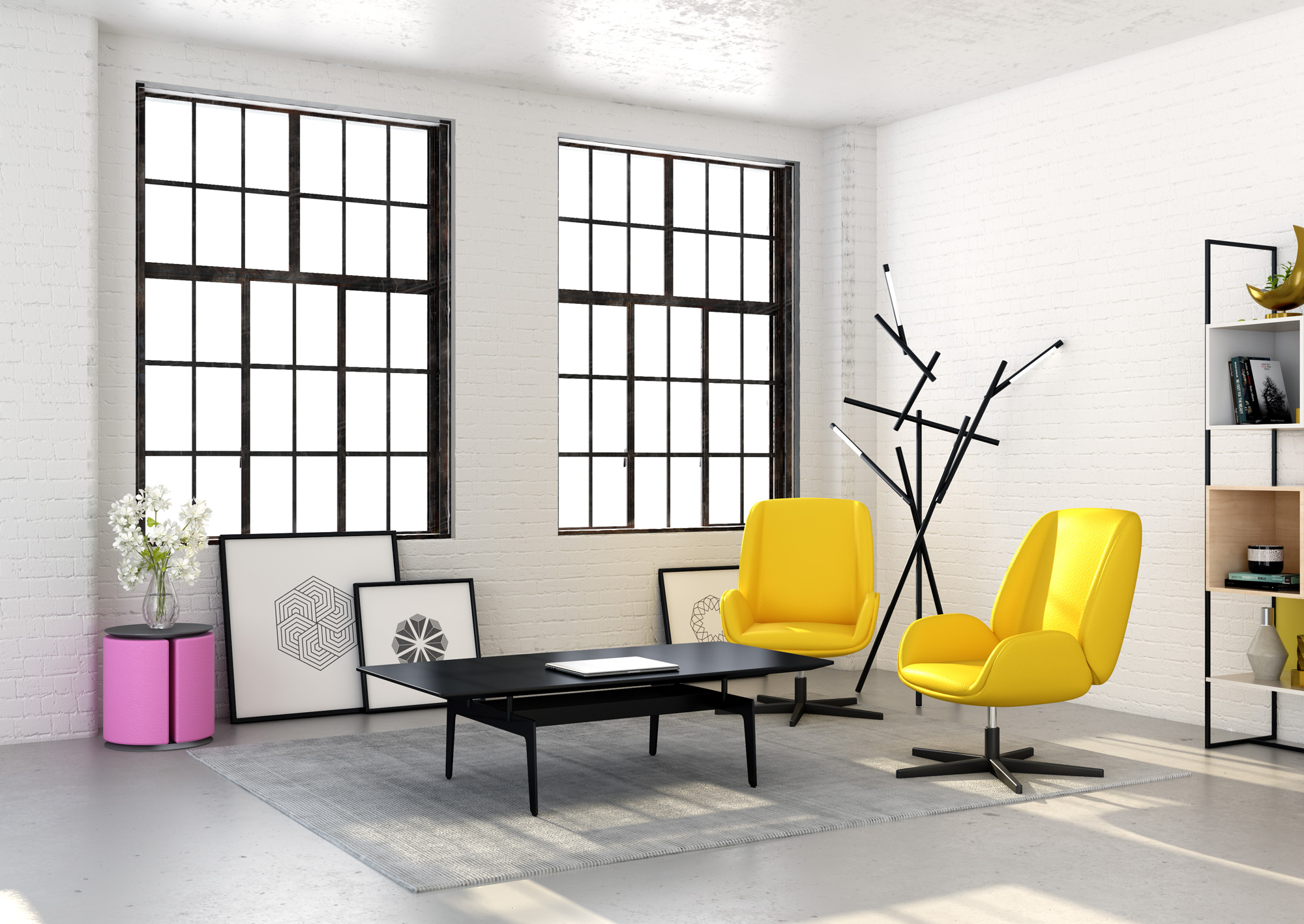
1. Sunlight
If given the choice, all humans want a window view. While this may not always be possible in office configurations, big windows that allow for a bright room (and less dreary florescent light!) are a must when it comes to boosting worker happiness, productivity, and even our circadian rhythms. Where it’s not possible to get sunlight, companies could consider investing in lights or lamps that mimic sunlight (also called “therapy lamps”), which have been shown to be particularly effective for people with seasonal affective disorder.
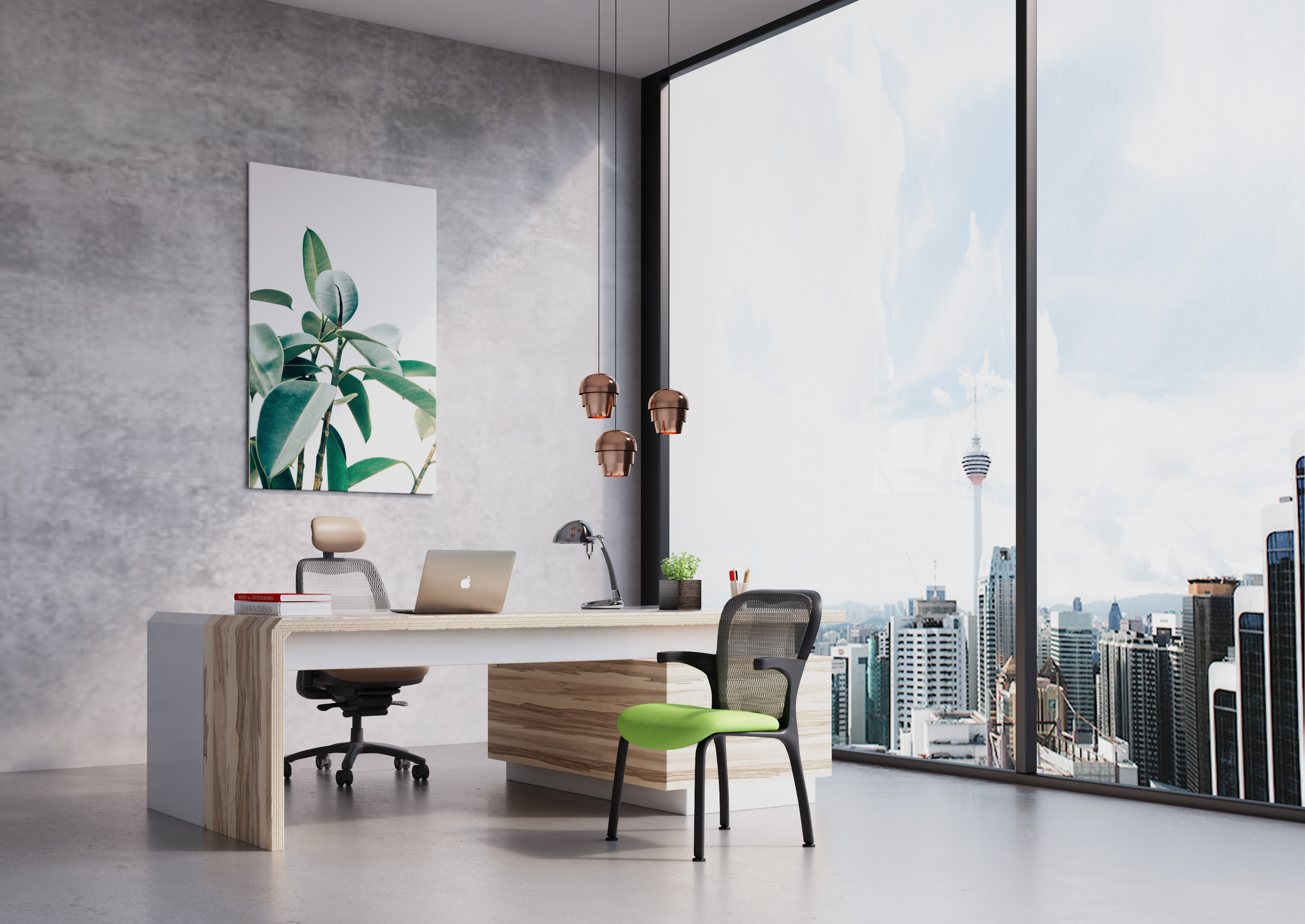
2. Images of Nature
This one may seem silly, but studies have shown that, where windows aren’t available, even images of real nature can improve mental health. In an interesting clinical study, patients with access to videos of nature—forests, flowers, oceans, and waterfalls—used their pain medicine less than the control group. And while a big piece of modern art might make a statement in your apartment lobby, it might be better to keep it away from employee workspaces. Studies have also shown that Jackson Pollock-style paintings actually stress our brains out, while landscapes calm us. This being said, that Jackson Pollock could be great for an area where you want to stimulate thought and hyper-attentiveness, like a boardroom.
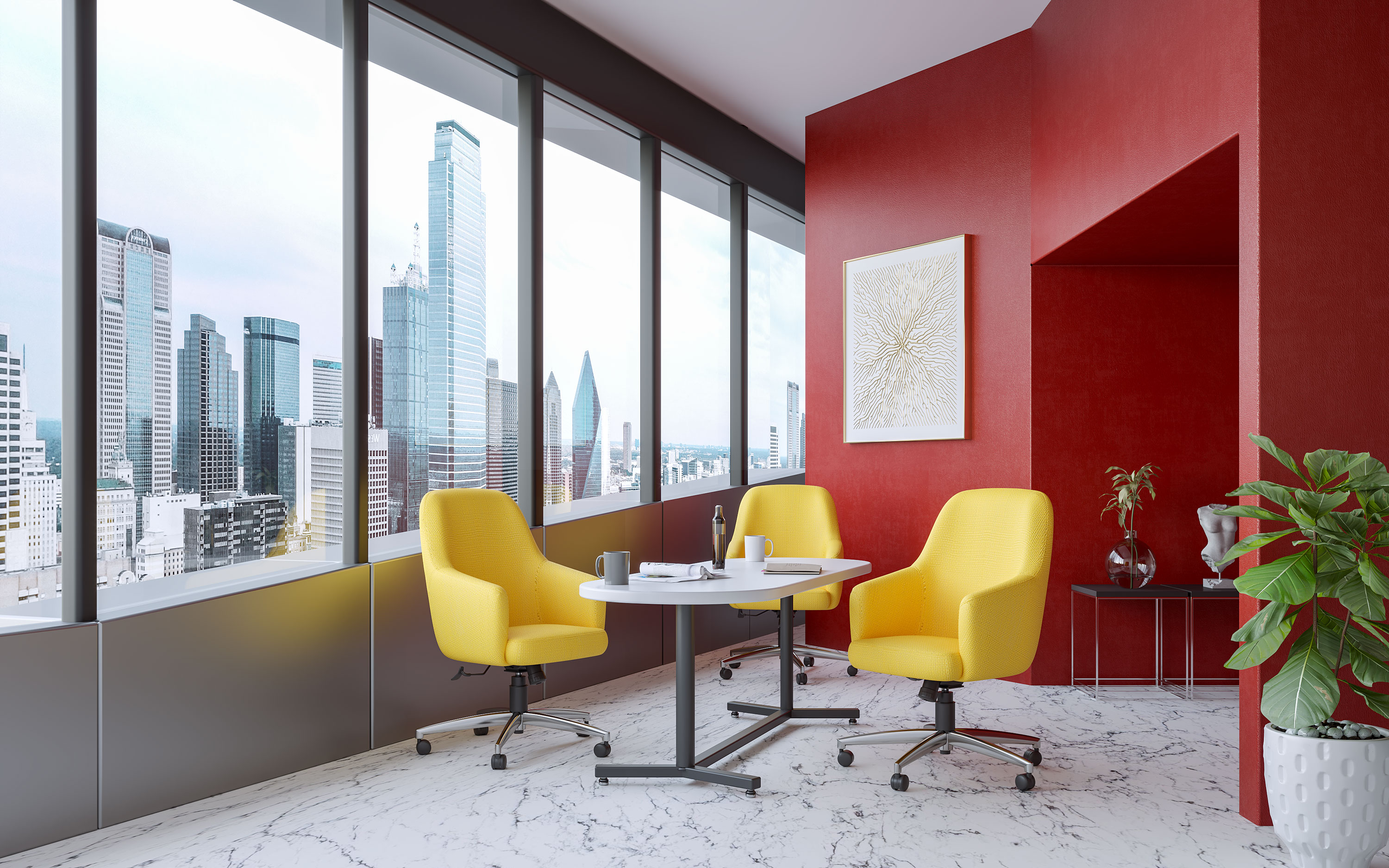
3. Color Your World
You probably won’t be surprised to hear that blues and greens are shown to be calming colours, while brighter colours like reds, oranges, and yellows are more stimulating. That’s why fast food chains use these colours in abundance: to capture our attention and stimulate us to buy more. Strategic use of colour in the office can also have a stimulating or calming effect. For instance, designing workspaces with more natural tones—blues and greens—will reduce stress levels at workstations. Conversely, dull conference rooms have been shown to actually stymie creative discussion. Using stimulating colour—like painting one wall in a boardroom orange—can actually stimulate your body’s thought processes and energize discussion. Finally, mimic the natural landscape. Studies have also shown that having a darker floor and lighter ceiling—mimicking the ground and the sky—have positive effects on human happiness and feelings of calm or safety in a location.
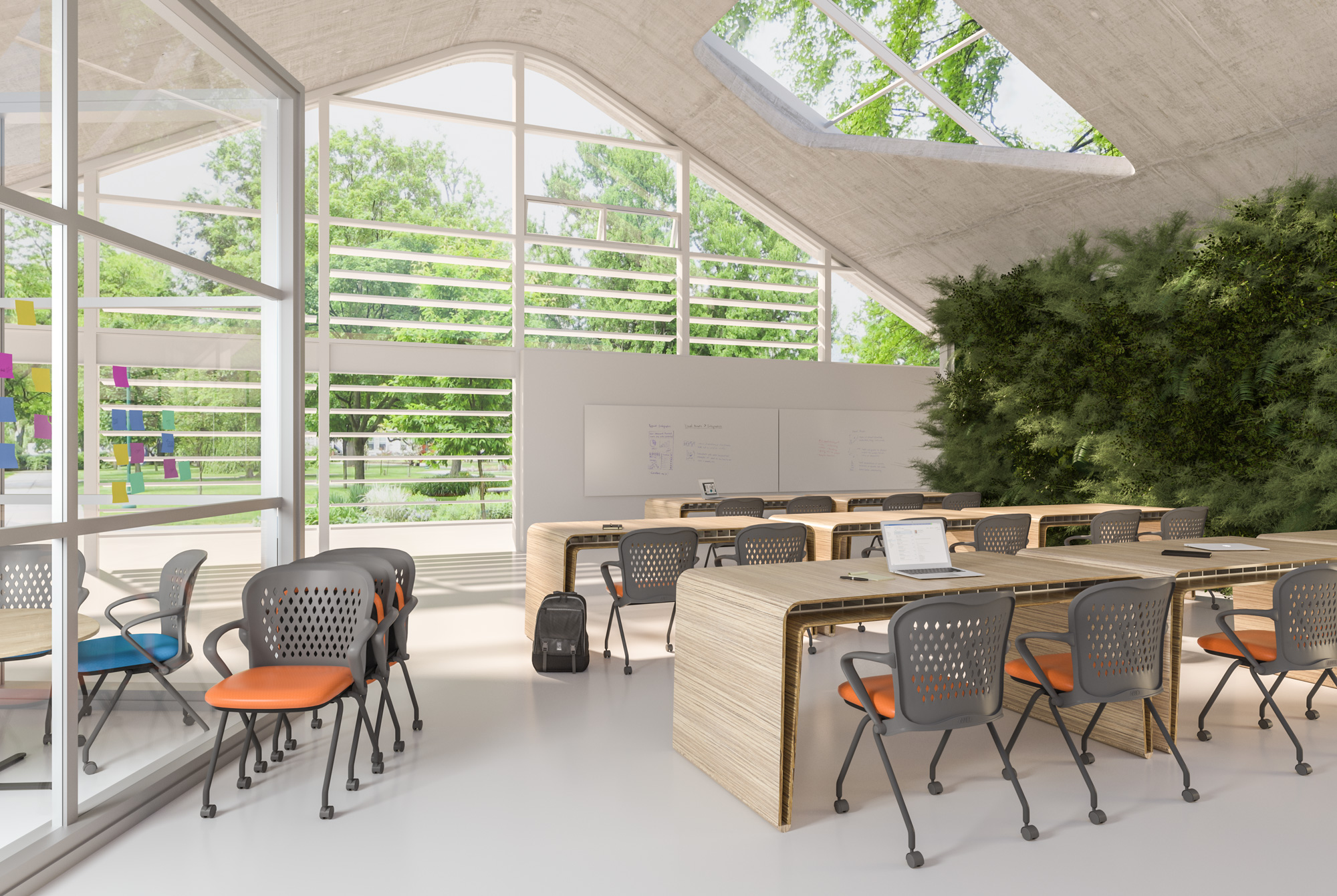
4. Green Spaces
Building off the ability of natural colours like blues and greens to boost happiness and reduce stress, incorporating greenspace into your office environment has proven benefits for mental health and boosting your mood. One trend we love is creating a gorgeous garden rooftop where possible—we have a bee apiary on ours! If that’s not feasible for your office, then having plants in the office or a dedicated green space (another trend we love is ‘green’ walls, featured in our February 2019 newsletter). Whatever form it takes, incorporating nature—specifically green space—into your office will reduce stress.
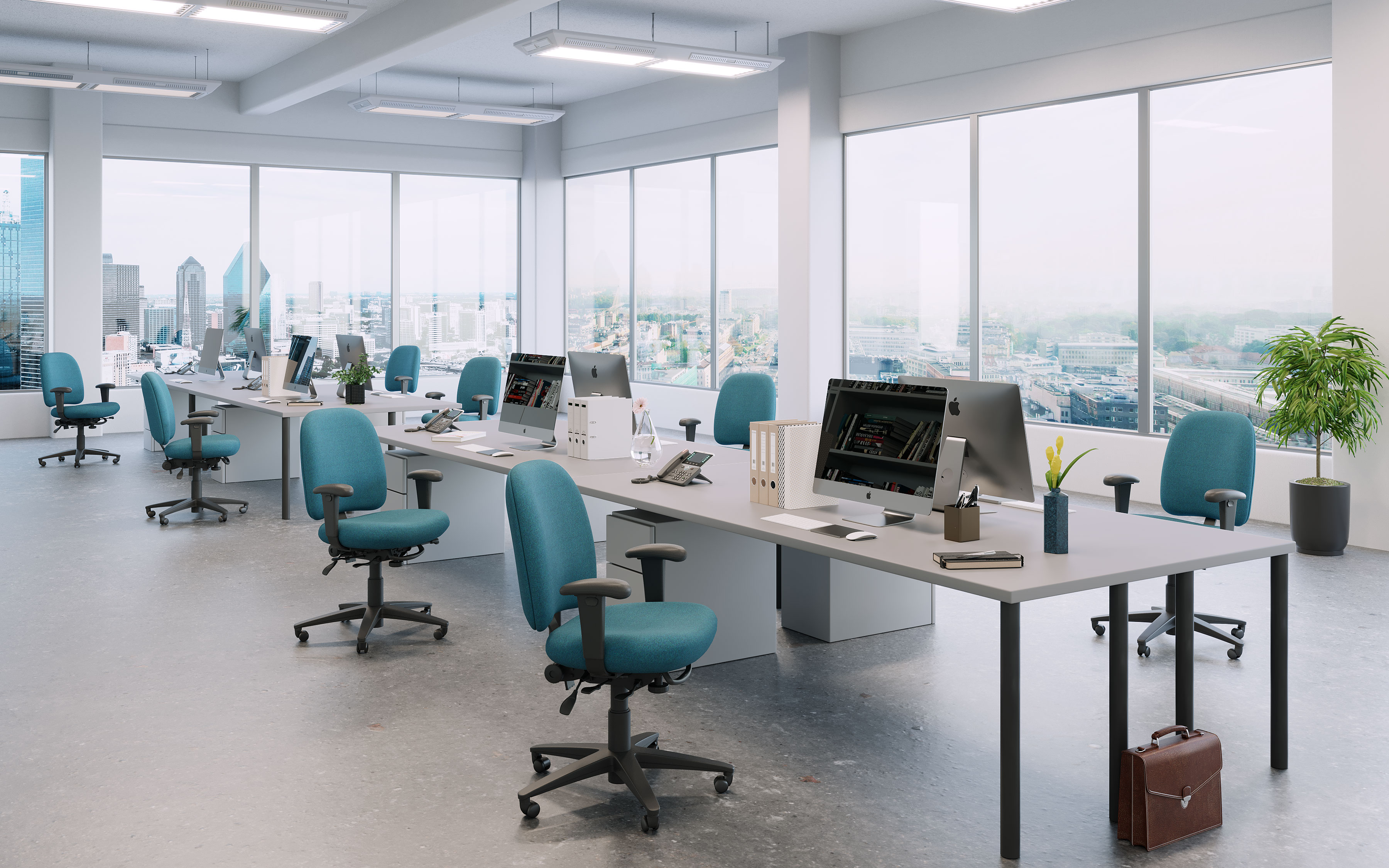
5. Open Space
Often overlooked, open spaces do wonders for our mental health and our creativity, as they mimic the outside world where there are multiple paths. As anyone who’s been stuck in rush-hour traffic, on a busy subway, or even riding an elevator jammed-full of people knows, lack of space can induce anxiety. This stressor also applies to tight office spaces: small cubicles or offices, low-ceilings, tightly-packed desks. The best remedy is an office space with higher ceilings and open working spaces (think co-working tables or offices that have many places for employees to sit and work, rather than limiting them one spot day-in and day-out). Interesting studies have shown that higher ceilings and open spaces boost employees’ creativity. You don’t have to have a huge office to make this work: by putting up fewer barriers in a space, employees’ subconscious perception of space and environment will be positively impacted.
 Our products
Our products 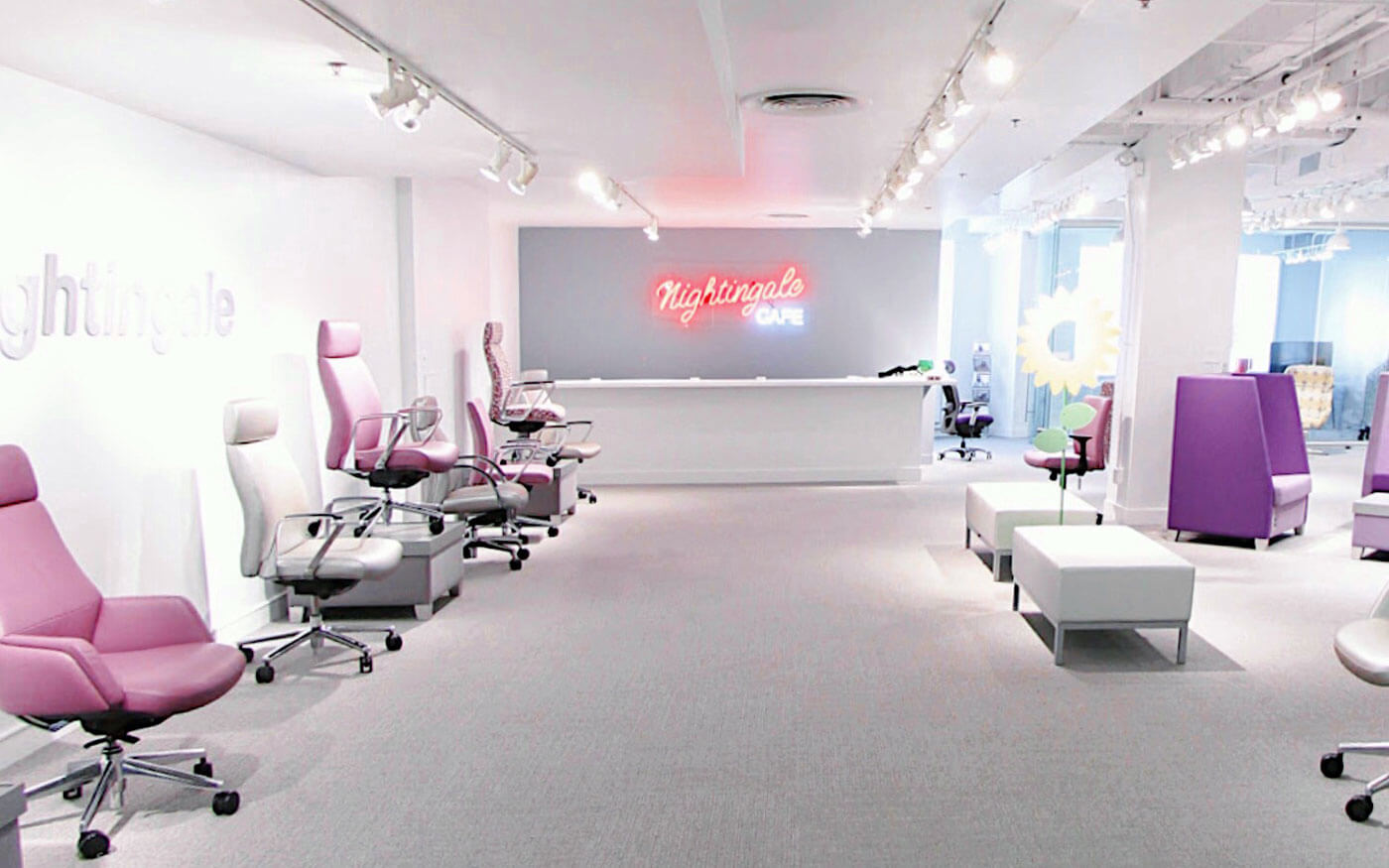 Our showrooms
Our showrooms  Our careers
Our careers